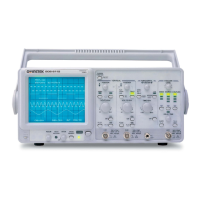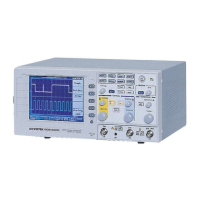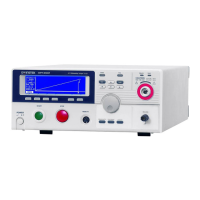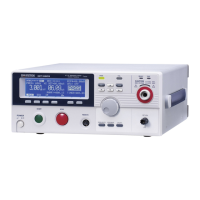Do you have a question about the GW Instek GOS-620FG and is the answer not in the manual?
Overview of the GOS-620FG oscilloscope + Function Generator's features and capabilities.
Details on key features like high intensity CRT, wide bandwidth, and alternate triggering.
Technical parameters for the oscilloscope's vertical axis, including sensitivity, modes, and coupling.
Specifications for triggering modes, slope, level, and sources for waveform synchronization.
Parameters for sweep time, sweep magnification, linearity, and position control.
Specifications for the oscilloscope's X-Y operation mode, including sensitivity and bandwidth.
Technical details for Z-Axis input, CRT characteristics, and calibration voltage output.
Specifications for the built-in function generator, including output types, frequency, and impedance.
Covers power source, consumption, operation, storage environment, accessories, dimensions, and weight.
Procedures for unpacking and inspecting the instrument for any damages.
Guidance on setting the correct line voltage and fuse replacement for safe operation.
Detailed description of the front panel controls for CRT, Vertical Axis, and other functions.
Identification and function of rear panel connectors, switches, and indicators.
Step-by-step guide for basic single-channel operation of the oscilloscope.
Instructions for operating the oscilloscope in dual-channel mode, including ALT and CHOP.
How to display the algebraic sum or difference of CH1 and CH2 signals.
Detailed explanation of triggering functions, modes (AUTO, NORM, TV-V, TV-H), and sources (CH1, CH2, LINE, EXT).
Using controls for setting trigger level, slope, and the alternate trigger function.
Adjusting sweep speed and using magnification for detailed waveform viewing.
Instructions for using the instrument as an X-Y oscilloscope for graphical analysis.
Procedures for calibrating probes and adjusting DC balance for accurate measurements.
Basic operation of the built-in function generator for outputting waveforms.
Procedure for replacing the fuse, including warnings and fuse rating information.
Steps to convert the instrument between 115V and 230V power sources.
Guidelines for safely cleaning the instrument using mild detergents.
| Brand | GW Instek |
|---|---|
| Model | GOS-620FG |
| Category | Test Equipment |
| Language | English |












